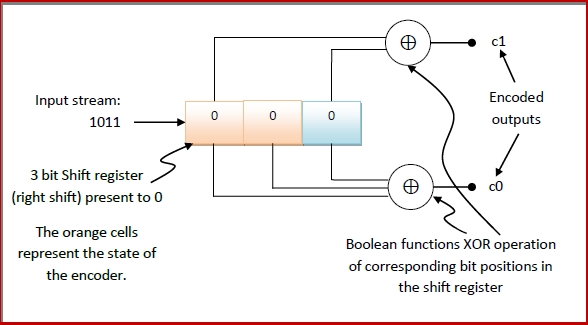DCOM-CONVOLUTION CODE

Name of Experiment :-Implementation of Convolutional Code Using MATLAB
Convolutional Codes
In convolutional codes, the message comprises of data streams of arbitrary length and a sequence of output bits are generated by the sliding application of Boolean functions to the data stream.
In block codes, the data comprises of a block of data of a definite length. However, in convolutional codes, the input data bits are not divided into block but are instead fed as streams of data bits, which convolve to output bits based upon the logic function of the encoder. Also, unlike block codes, where the output codeword is dependent only on the present inputs, in convolutional codes, output stream depends not only the present input bits but also only previous input bits stored in memory.
For generating a convolutional code, the information is passed sequentially through a linear finite-state shift register. The shift register comprises of (-bit) stages and Boolean function generators.
A convolutional code can be represented as (n,k, K) where
k is the number of bits shifted into the encoder at one time. Generally, k = 1.
n is the number of encoder output bits corresponding to k information bits.
The code-rate, Rc = k/n .
The encoder memory, a shift register of size k, is the constraint length.
n is a function of the present input bits and the contents of K.
The state of the encoder is given by the value of (K - 1) bits.
Example of Generating a Convolutional Code
Let us consider a convolutional encoder with k = 1, n = 2 and K = 3.
The code-rate, Rc = k/n = 1/2 .

The input string is streamed from right to left into the encoder.





Comments
Post a Comment